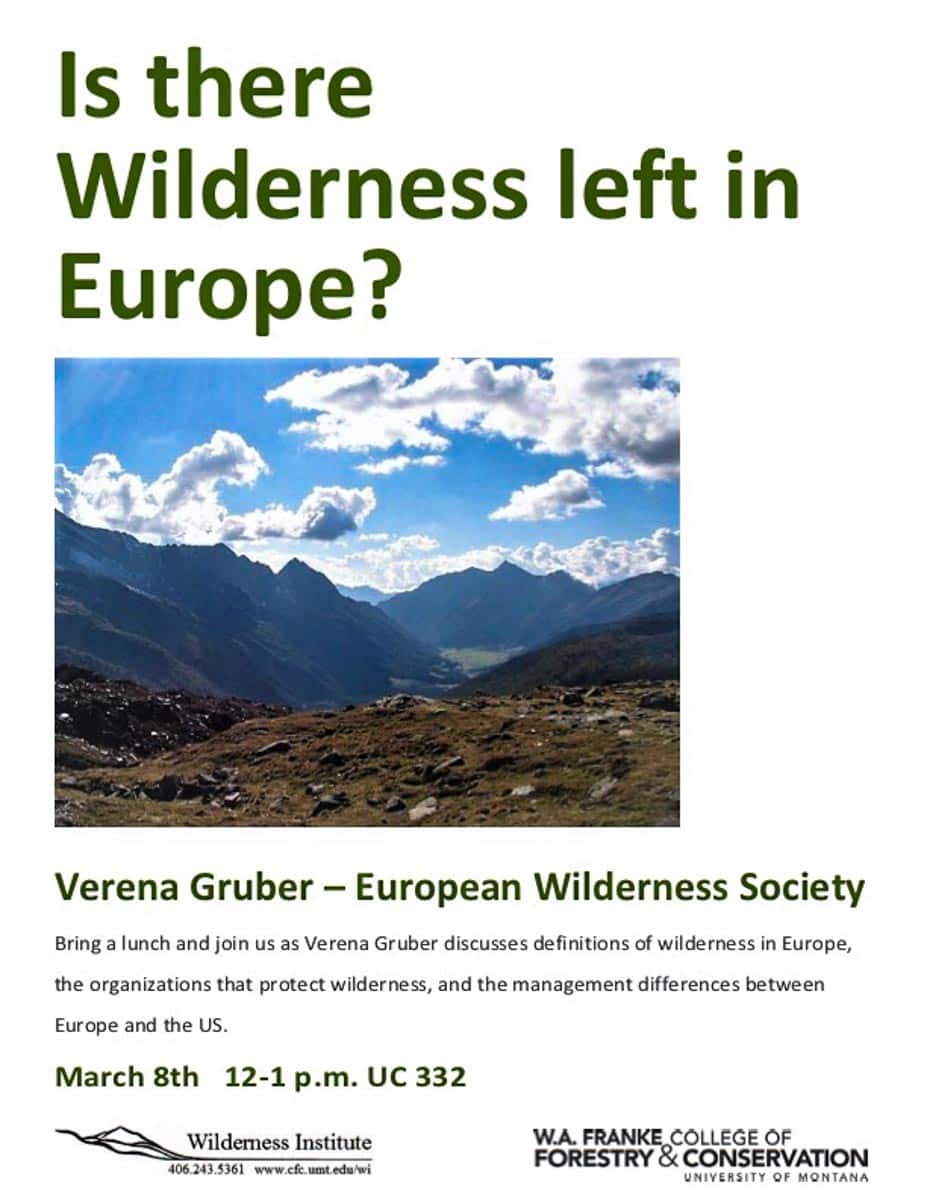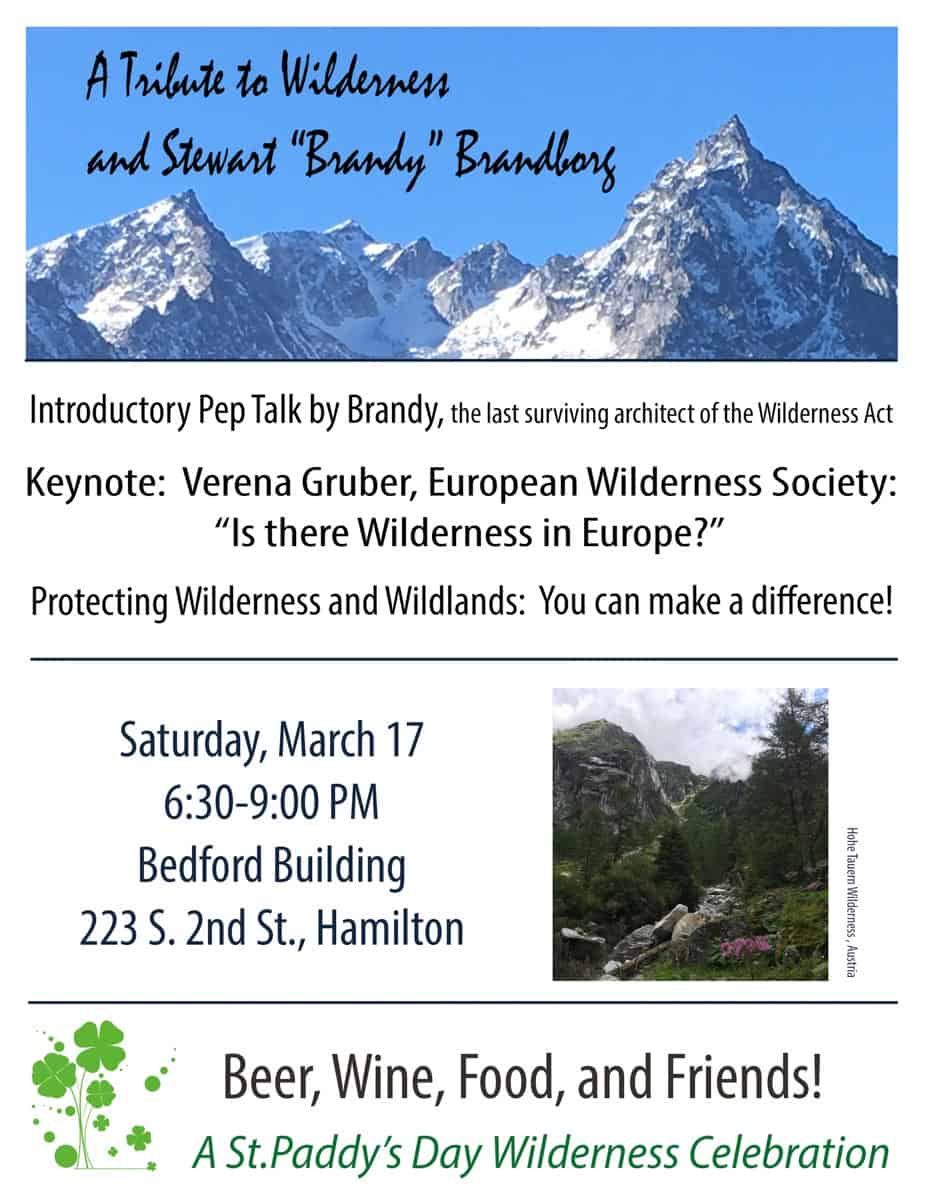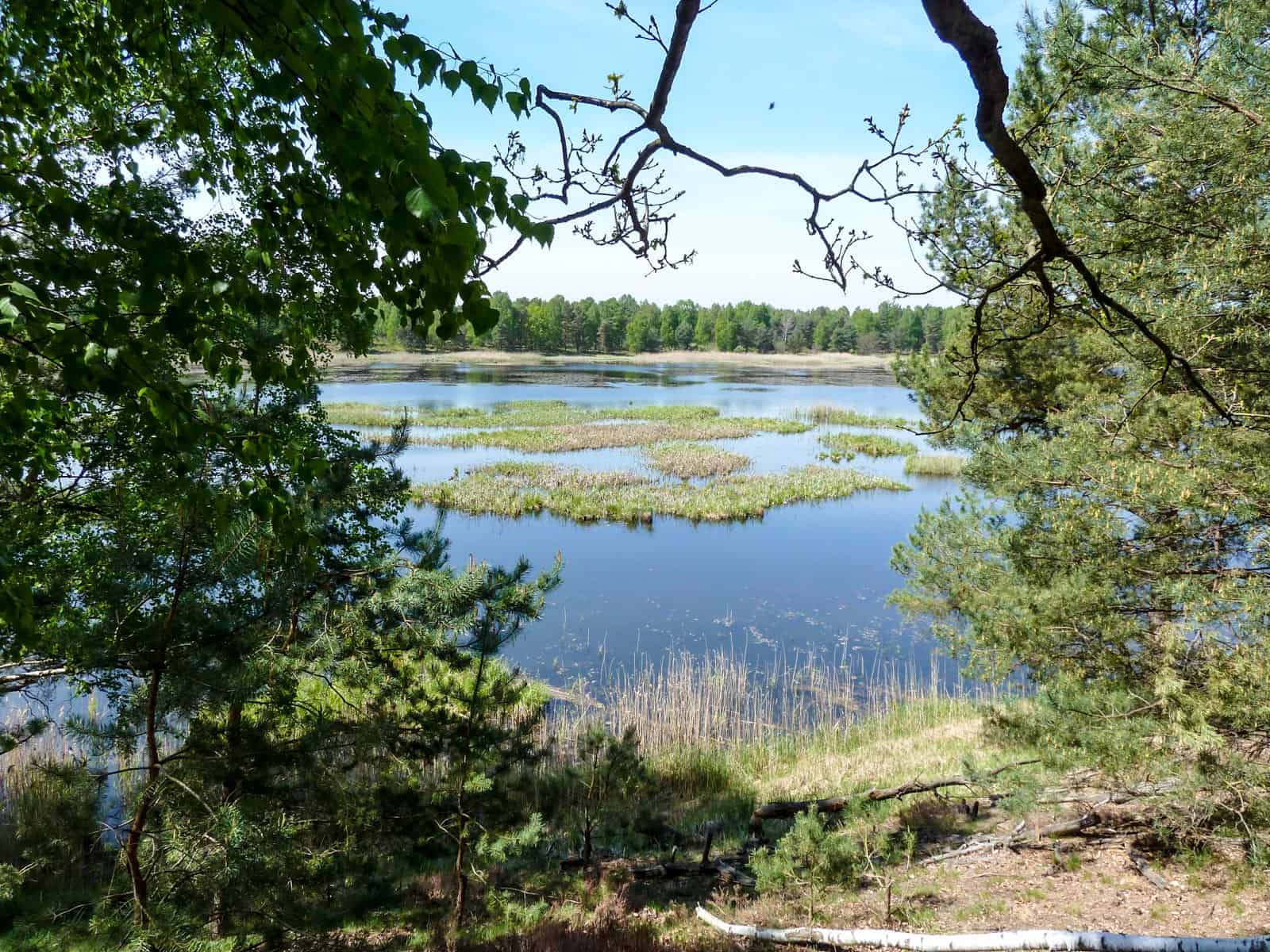Is there Wilderness left in Europe? – University of Montana
 My talk at the University of Montana about Wilderness in Europe took a closer look onto the European definitions of Wilderness and Wild Areas as well as on the organisations implementing them. The differences and challenges of these different implementations but most of all the differences between the European and the American definitions of Wilderness and in particular their implementation, where the main topic of my presentation.
My talk at the University of Montana about Wilderness in Europe took a closer look onto the European definitions of Wilderness and Wild Areas as well as on the organisations implementing them. The differences and challenges of these different implementations but most of all the differences between the European and the American definitions of Wilderness and in particular their implementation, where the main topic of my presentation.
Is European Wilderness different than American Wilderness?
Wilderness is a fairly new concept in Europe compared to the United States. The U.S. Wilderness Act is already more than 50 years old and served as a basis for the European definitions of the Wilderness Working Group. It protects undeveloped public land that retained its primeval character from permanent improvments or human habitation for present and future generations to use and enjoy it as Wilderness. Europe, according to the European Wilderness Quality Standard protects areas unmodified or only slightly modified without any intrusive or extractive human activities or infrastructure for current and future generations to have the opportunity to experience nature on its own. So both definitions protect pristine, undeveloped landscapes without significant or permanent human activities and structures. The objectives of these protections however differ and lead to various distinctions, in particular when it comes to acces, human use and recreation.
Access to and use of Wilderness
A significant difference between the two definitions is the handling of camping. Camping is subject to national restrictions in Europe but is mostly forbidden in protected areas and Wilderness areas. This includes setting up camp fires. In the United States camping and camp fires play an essential part of the overall Wilderness experience and are allowed according to “leave no trace” guidelines. There might be seasonal or local restrictions though. Similar, however, are the allowed ways to access Wilderness. Only non-motorised means of transport, meaning by foot or skies, are allowed in European and American Wilderness.
The continuation of established uses in American Wilderness, such as grazing or hunting, is another significant difference to Europe. Even though the allowed extent and amount of these established uses might differ between the four federal agencies that manage Wilderness, this exception of uses can partialy be explained by the historic contex of the development of the U.S. Wilderness Act.

Ownership structures influence Wilderness stewardship
Wilderness areas in the U.S. are generally established on public land. In Europe, on the other hand, this varies from country to country and most protected areas are established on a mosaic of private and public land. Ownership structures might influence the decision making process within a Wilderness area significantly. The European Wilderness Quality Standart and Audit System partially handles this issue with zonation.
Protection status
One of the most far-reaching difference is the legal embedding of the definitions. The U.S. Wilderness Act is an act of Congress, so it is a law. Wilderness is not legally embedded in any European wide law and only a few countries, such as Germany, made the protection of Wilderness part of their environmental legislations. This non-existing legal framework for Wilderness in Europe consequently challenges and complicates its long-term protection. It furthermore demands for an independet control body to point out threats and offer solutions to ensure the quality of European Wilderness. This is one of the main tasks of the European Wilderness Society.
What’s up next?
I will travel next to the Selway-Bitterroot Wilderness to explore this pristine landscape and wolverine research stations and to discusse current threats to this Wilderness area. Next week
I will give a talk about the objectives of the European and American Wilderness Definitions in Hamilton, where I will also have the opportunity to talk with Steward Brandy Brandborg, the last surviving architect of the U.S. Wilderness Act.








